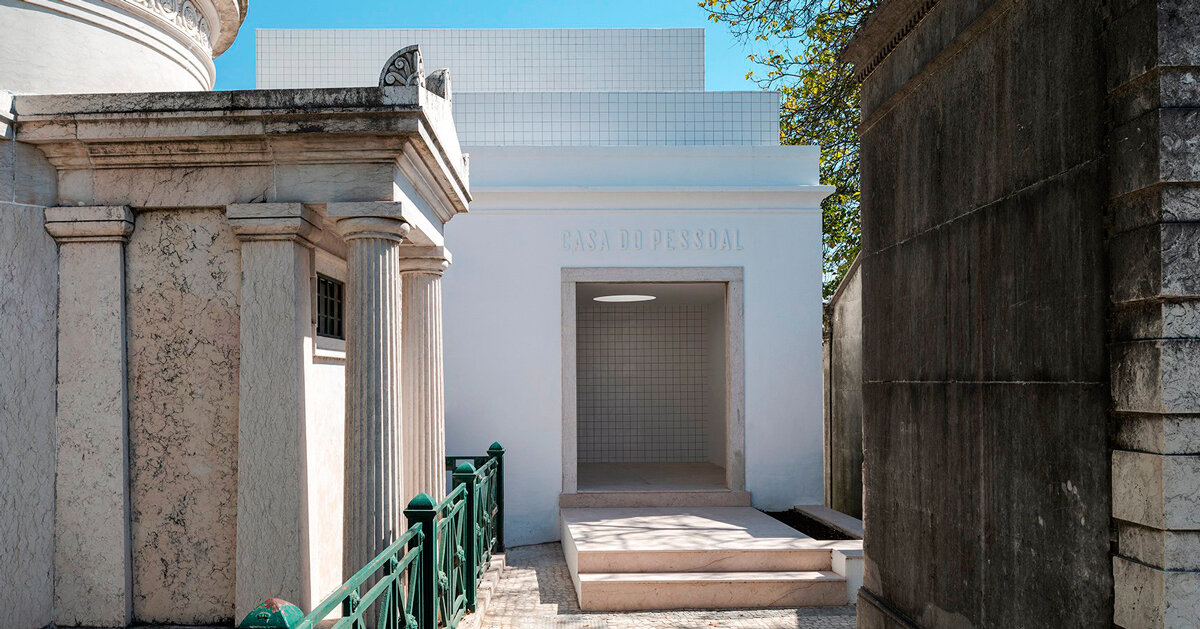'a building for life within death': com/o designs crematorium staff residence in lisbon
- Select a language for the TTS:
- UK English Female
- UK English Male
- US English Female
- US English Male
- Australian Female
- Australian Male
- Language selected: (auto detect) - EN

Play all audios:

CASA DO PESSOAL IN ALTO DE SÃO JOÃO CEMETERY IN PORTUGAL Architectural studio COM/O atelier RECONSTRUCTS Casa do Pessoal, a CREMATORIUM staff residence hosting workers’ changing rooms and
maintenance workshops for the Alto de São João cemetery in LISBON. The residence stands in site for several decades leading to the poor condition of the conserved construction and the
inability to meet the needs of the users and staff. Following a conceptual design that serves the ‘lively’ workdays of people dealing with the presence of death, the creative team draws from
bath spatial compositions to form a calming ambiance through the use of minimal volumes and materials. Casa do Pessoal by COM/O atelier | all images by Daniel Malhão CLEAR STRUCTURAL
RHYTHM DEFINES THE EXTERIOR _‘It is a building for life within death’_, shares THE DESIGN TEAM commenting on the optimization of the crematorium staff workspace after the renovation plan.
The clear structural rhythm of the existing building, a regular metric marked by the windows in the exterior facades, is maintained and reinforced defining the distribution of the interior
spaces. While the external surfaces are sustained and repaired when needed, the roof system follows alterations to enhance its functionality and appearance. The interior organizes all
service areas and entrances next to the main facades on both sides of the building, while the more intimate zones are assembled at the center of the structure. The changing rooms and staff
service area are relocated to the first floor achieving easy access from the highest street level, whereas the workshop and warehouse stand on the ground floor in contact with the lowest
street level. The expanded roof level hosts a third floor arranging a staff service area, a small kitchen, and a common zone that extends to an outdoor terrace overlooking the river Tagus.
SEMI-TRANSLUCENT GLASS OPENINGS CONJOIN THE INTERIOR ZONES A central box-like formation organizes the changing rooms that stay detached from the external facades allowing the unbothered
circulation around it. The private zone is transposed to the configuration of the new volume on the third floor. The new interventions and modifications both internal and external are
covered with white tiles to distinguish them from the original structure. Echoing the steam atmosphere of bath spaces, the interior assembles semi-translucent and transparent glass doors and
windows throughout. Both natural light distribution, and visual contact with the exterior are achieved through the glazed openings, while a skylight made of blue glass crosses the entire
building vertically resembling the stained glass windows in most of the tombs in the cemetery.